Faculty
Our program has faculty in the School of Medicine, College of Arts & Sciences, College of Engineering, and School of Public Health. Our faculty (and their labs) are located in the UW Medical Center, the Health Sciences, Upper Campus, Fred Hutchinson Cancer Research Center (FHCRC), Harborview Medical Center (HMC), Seattle Children’s Research Institute, South Lake Union site of UW Medicine, the Regional VA Hospital/Med Center, and the Allen Institute for Brain Science. Our current students span most of those sites. If you are interested in joining the program as faculty, please see the requirements and application process.
* Faculty member is currently accepting students in their lab for the 2024-2025 academic year.
i Denotes faculty has funding that is able to support international students.
Sama Ahmed | Syst, Sens & Per, Motor

Research:
Nervous systems can produce a wide variety of adaptive behaviors, such as running, feeding, and singing. Yet, not all behaviors can be effectively performed simultaneously (“don’t text and drive!”). How do neural circuits interact to generate multiple behaviors at the same time? What aspects of neural activity limit the expression of different behaviors? And, what can these constraints teach us about nervous system function more broadly? To address these questions, aim to understand the computations implemented by brain-wide networks, uncover how neural circuits interact, at different scales, to generate behaviors, and investigate the natural limits of nervous system function. We aim to achieve these goals by studying the small brain of the fruit fly, D. melanogaster, using recent advances in neurogenetics, high-resolution behavioral analysis, modeling, and neural imaging to reveal general principles of dynamic brain function. Importantly, our research provides a practice-space to challenge, and replace, value systems that toxify academia. We center intentionality, humility, and imagination as guiding values in how we work. These values move us away from product-oriented thinking towards a way of science-ing that prioritizes equity, health, safety, and creativity.
*i Michael Ailion | Molecular mechanisms of neuromodulation and cellular mechanisms of genetic incompatibility.

Research:
We are interested in the function of neuromodulators. The nervous system uses two modes of chemical signaling at synapses. Fast signaling occurs by the release of small molecule neurotransmitters that activate ligand-gated ion channels. Slower signaling occurs by the release of neuromodulators that activate seven-transmembrane receptors coupled to heterotrimeric G proteins. Neuromodulators are typically neuropeptides, or monoamines such as dopamine, noradrenaline, and serotonin. Defects in neuromodulatory pathways do not usually lead to death, but can cause mental disorders such as depression, schizophrenia, autism, and attention deficit and hyperactivity disorder, as well as eating disorders and drug addiction. Neuromodulators are released from dense-core vesicles. Thus, a molecular understanding of neuromodulation requires both an understanding of the regulation of dense-core vesicle release as well as the G protein signal transduction pathways that respond to neuromodulatory signals.
We use molecular biology, genetics, biochemistry and novel imaging techniques in C. elegans to understand how neuromodulators are packaged into dense-core vesicles, how these vesicles are trafficked and released, and how cells respond to neuromodulatory signals. We have identified a novel conserved pathway that regulates dense-core vesicle maturation, as well as a novel G protein signal transduction pathway that controls the response to neuromodulatory signals.
Fritzie I. Arce-McShane | Syst, Motor, Sens & Per, Cog

Research:
Dr. Arce-McShane’s research investigates the principles of cortical and biomechanical control of orofacial sensorimotor behavior and how these are affected by learning, aging, and disease. Her previous background as a physical therapist with strong concentrations in movement science, neurological and cognitive rehabilitation has given her a keen awareness of patients’ problems and needs. Her basic science research draws from her clinical experience and is aimed towards innovative research that impacts the evaluation and treatment of orofacial pain, neurodegenerative diseases, sensorimotor disorders, Alzheimer’s Disease and age-related dementias.
Her lab uses a multidisciplinary approach to understand the interplay between sensation and movement using converging evidence from psychophysics, biomechanics, neurophysiology, and computational modeling. Her methods include recording neural activity from chronically-implanted microelectrode arrays in multiple regions of the cerebral cortex simultaneous with recording the movements of the tongue and the mandible using high-resolution biplanar radiography and applying computational models to understand the principles of sensorimotor control.
We use molecular biology, genetics, biochemistry and novel imaging techniques in C. elegans to understand how neuromodulators are packaged into dense-core vesicles, how these vesicles are trafficked and released, and how cells respond to neuromodulatory signals. We have identified a novel conserved pathway that regulates dense-core vesicle maturation, as well as a novel G protein signal transduction pathway that controls the response to neuromodulatory signals.
*i Chip Asbury | Molecular basis of mitosis.

Research:
Our laboratory studies the mitotic spindle, an exquisite molecular machine that organizes and separates duplicated chromosomes during cell division, thereby ensuring equal partitioning of the genome. To uncover how this machine operates, we are reconstituting spindle functions using purified components and applying biophysical tools for manipulation and tracking of individual molecules.
Nathan Baertsch | Defining brain circuits and neural network mechanisms that mediate respiratory motor control.

Research:
The Baertsch Lab investigates how breathing is generated and regulated by the brain. By uncovering fundamental cellular and network mechanisms of respiratory control, we hope to inspire new therapeutic interventions to treat breathing disorders associated with neurological pathology, prematurity, and opioid use.
Jihong Bai | How synapses are assembled into functional circuits using a combination of genetic, biochemical, imaging, and electrophysiology methods.

Research:
Our research goal is to understand the molecular and cellular basis for neuron communication. As neurons are specialized cells that transmit chemical and electrical signals, the speed and efficiency of signal propagation in neural circuits are crucial for all aspects of life and behavior. Disruption of information flow in neural circuits is responsible for numerous neurological diseases and mental illnesses. To investigate the principles that neurons use to process and deliver information, we utilize a combination of genetic, biochemical, imaging, and electrophysiological techniques to explore the following areas of neuroscience; 1) molecular mechanisms for synaptic communication; 2) structural and function plasticity in neural circuits; and 3) the repair of damaged circuits through synaptic engineering.
*i Wyeth Bair | Computer modeling and electrophysiology of the visual system.

Research:
We are a systems neuroscience group that aims to understand neural circuitry and neural coding in the cerebral cortex with a major emphasis on the primate visual system. We approach this problem by recording directly from neurons in the functioning brain in vivo and by creating and refining large scale spiking neural network models that run on parallel computers. Thus, we are an interdisciplinary lab where members may do computational studies, in vivo experiments, or both. The immediate goals of our computational work are (1) to unify neural circuit models of visual processing across modalities that intersect in the primary visual cortex (V1), i.e., to integrate models of motion, color and form processing to develop a more complete and deeper understanding of the computations carried out by cortical circuitry, (2) to extend these models to higher cortical areas to investigate shape representation in area V4 and motion perception in area V5/MT, and (3) to pioneer a novel web-based modeling framework (www.iModel.org) to promote the use of computer models and to advance collaboration between experimental, computational and theoretical neuroscientists. Our immediate experimental goals are the development of a cutting-edge optical recording system (2-photon Ca++ imaging) to facilitate the study of both large-scale and small neighborhood representation and computation in V1 and V4 of the primate. For example, we seek to understand inter-neuronal correlation within V1 at the microcircuit level and, in collaboration with the Pasupathy lab, the basis of shape representation within area V4. Our ultimate goal is to understand human visual perception well enough to reproduce it in artificial systems and to guide the future development of brain-machine interfaces.
Sandra Bajjalieh | Cell biology of neurons with emphases on membrane trafficking and lipid signaling pathways.

Research:
The tightly regulated secretion of neurotransmitters is the primary form of communication in the nervous system. Transmitter secretion is mediated by a specialized membrane trafficking cycle that includes the synthesis, filling, targeting, priming, calcium-dependent fusion and recycling of transmitter-containing (synaptic) vesicles. Identifying the molecular events that produce and regulate this cycle is a first step toward understanding how genetic and environmental factors influence nervous system functioning. Towards this end, my lab is studying proteins localized to the presynaptic terminal. Our current studies focus on synaptic vesicle protein composition, the role of Synaptic Vesicle Protein 2 (SV2) in exo- and endocytosis and on lipid kinases that regulate neuronal function.
Melissa Barker-Haliski | C-M, Dis

Research:
Barker-Haliski’s research interests support the development and characterization of novel animal models for the preclinical evaluation of investigational therapies for epilepsy in special patient populations, including patients with pharmacoresistant epilepsy and elderly patients with epilepsy. Her research seeks to define the extent to which aging, and aging-related neurological disorders additively impact on seizure susceptibility, pharmacotherapeutic response, and long-term disease outcomes. Patients with Alzheimer’s disease are increasingly recognized to experience undiagnosed focal seizures, but the precise mechanisms underlying this clinical phenomenon are not well understood. She actively collaborates with faculty in the School of Medicine to develop preclinical platforms to define how aging, chronic seizures, and Alzheimer’s disease-associated risk genes modify disease trajectory, including applying these models to define the pharmacotherapeutic efficacy and tolerability of antiseizure drugs in aged rodents with and without Alzheimer’s disease-associated risk factors. The laboratory uses a combination of behavioral pharmacology and cellular and molecular neuroscience techniques to elucidate the mechanisms underlying ictogenesis and epileptogenesis in aged rodent models with and without Alzheimer’s disease-associated genetic risk factors.
Andres Barria | C-M

Research:
A fundamental aspect of neuronal biology is the establishment of synaptic connections and their experience-dependent modification throughout life. Thus, synaptic plasticity, a process that allows neurons to re-adjust their connectivity in an activity-dependent manner, is essential in the establishment and maturation of functional neuronal circuits during development and is thought to be one of the cellular bases for learning and memory.
In the hippocampus, early synaptic connections onto pyramidal cells are transformed into dendritic spines with a complex array of scaffolding proteins, signaling molecules, protein receptors, and ion channels, which cluster and form the postsynaptic density. These glutamatergic synapses are established and can be modified by activity. Interestingly, the ability to modify synapses is itself plastic and depends on experience. Thus, as the animal age, synaptic plasticity decreases in several brain regions, particularly in the cortex. The NMDA-type Glutamate Receptor is critical for these activity-dependent processes that create, reorganize and refine connections, and allow changes in the strength of individual synapses.
Using molecular and cellular techniques, along with advanced imaging and electrophysiology, I try to understand the molecular and cellular mechanisms that a) trigger synapse formation and stabilize them, and b) control the level of synaptic plasticity at different developmental stages of the animal.
Michele A. Basso | Cog, C-M, Syst, Dis, Comp, Sens & Per

Research:
The work performed in the Basso laboratory is aimed at unraveling the neuronal circuits of decision-making in health and disease. Dr. Basso’s work spans multiple species and employs multiple technologies designed to understand how memory and sensory information are combined to give rise to our decisions and choices of action.
Martha Bosma | Development of central nervous system neurons using physiological and molecular techniques.

Research:
The processes leading to the final placement and functioning of cells in the nervous system include proliferation, migration, and electrical and morphological differentiation. My research interests are in the areas of the physiology of ion channels and receptors in mammalian CNS neurons, and their roles in neuronal development and migration. At present we are concentrating on two different types of neurons: peptide-secreting neurons from the hypothalamus and motor neurons of the brainstem.
The specific subset of endocrine cells is the gonadotropin-hormone releasing hormone (GnRH) neurons, which reside in the hypothalamus but originate outside of the central nervous system, in the olfactory placode. In the adult animal, GnRH is secreted by these neurons into the median eminence, which then carries into the anterior pituitary to stimulate the release of the gonadotropins. This GnRH secretion is characteristically episodic, which may be essential for the correct functioning of the hypothalamic-pituitary axis. Because these cells migrate to the CNS, we have access to them over a wide range of developmental stages over which secretory competence occurs.
We are also examining the expression of ion channels in motor nuclei of the brainstem, in order to characterize the endogenous rhythms that underlie not only the adult pattern of physiological functioning but also to understand the role that such endogenous activity plays in the survival and final patterning of neurons.
In this work I have employed electrophysiological techniques (patch clamp), transfection methods to insert foreign ion channels into cultured cells, molecular detection methods to assay RNA and protein levels for specific ion channels, and calcium imaging technology.
Mark Bothwell | Growth factor mechanisms in neural development and degenerative disease.

Associate Professor
Department of Physiology & Biophysics ✉
Preferred Pronouns: He/Him/His
Neuroscience Focus Areas:
Research:
My present research activities focus on: (1) generating a comprehensive description of the biophysical properties of motoneurons and their alterations in mouse models of human neurological disorders, and (2) elucidating how the functional coupling and cooperative gating of voltage-gated membrane channels affect the excitability of neurons.
Geoffrey Boynton | Functional organization of human visual perception.

Research:
We use a combination of functional magnetic resonance imaging (fMRI) and behavioral measurements to study the relationship between neuronal responses in the visual cortex of the brain and our conscious visual experience. A major goal of our research is to understand where and how in the sensory pathways the representation of unattended sensory stimuli is attenuated. We are also interested in the relationship, across individuals, between performance on a variety of perceptual tasks and the topology of the cortical areas that represent the stimuli for those tasks.
Michael Bruchas | C-M, Syst, Sens & Per, M-E-S

Research:
Stress and pain-induced behavior is controlled by specific neurotransmitters and their signaling partners in the central and peripheral nervous systems. Many of these signals are conveyed through activation of neuropeptide and monoamine receptor systems. These receptors are seven transmembrane spanning G-protein coupled receptors (GPCR, also called 7 transmembrane receptors) and they engage a variety of signaling cascades following neurotransmitter release and receptor binding. To expand our knowledge of the inner workings of the brain and to identify treatments for psychiatric diseases, the Bruchas laboratory aims to dissect how GPCR systems function in the contexts of stress, depression, addiction, and pain. We strive for a greater understanding of these receptors in real time, within intact systems, and biologically relevant models of behavior. We utilize pharmacological, optogenetic, genetic, viral, imaging, behavioral, and cutting-edge engineering approaches to uncover the specific role of GPCRs and their endogenous transmitters within in vivoneural circuits that modulate affective behavior.
*i Bing Brunton | Comp, Syst

Research:
With recent advances in technology and infrastructure, we continue to increase our capacity to record signals from brain cells in much greater numbers and at even faster speeds. My research leverages tools from modern computer science and mathematics to understand patterns in these rich, big neural data. I am particularly focused on building concise descriptions of complex data to enable neural-engineering solutions, including the capacity to interpret and manipulate states of the mind in real time.
*Astra S. Bryant | C-M, Syst, Sens & Per

Research:
Our lab focuses on understanding the thermosensory neuroethology and thermal physiology of soil-transmitted parasitic nematodes that infect over 1 billion people worldwide. We use an interdisciplinary, multi-scale approach combining expertise in neuroscience, parasitology, molecular biology, bioinformatics, and genetics to understand the molecular, cellular, and organismal adaptations that drive the specialized thermosensory behaviors of parasitic nematodes. For this work, we use the humanparasitic nematode Strongyloides stercoralis and the closely related rat-parasitic nematode Strongyloides ratti as model systems. We also use the free-living model nematode C. elegans, which shares many of the same genes and neurons as parasitic nematodes, but exhibits fundamentally different sensory behaviors. We are driven both by curiosity about the adaptations that generate specialized behavioral repertoires from evolutionary conserved neural circuits, as well as the potential to develop new approaches to treating a major threat to global health and economic stability.
*i Beth Buffalo | Sys, Dis, Cog

Research:
Our research is aimed at understanding the neural mechanisms that support learning and memory. Using neurophysiological techniques, we record simultaneously from multiple electrodes in the hippocampus and surrounding cortex in awake, behaving monkeys. We investigate how changes in neuronal activity correlate with the monkey’s ability to learn and remember. We are particularly interested in the activity of neuronal networks that underlie learning and memory processes, along with spatial navigation. We use spectral analysis techniques to investigate the role of oscillatory activity and neuronal synchronization in cognition.
*i Clemens Cabernard | The Cabernard lab is studying asymmetric cell division (ACD), a process that generates cellular diversity.

Research:
The brain is one of the most complex organs of the human body, enabling us with sophisticated cognitive functions and complex behavior. The human brain contains ~ 86 billion neurons and ~ 85 billion non-neuronal cells. This cell diversity is generated largely by asymmetrically dividing neural stem cells, forming differentiating neurons while self-renewing the neural stem cell. Misregulation of asymmetric cell division can result in dramatic neurodevelopmental disorders such as microcephaly, manifested in small brains and mental retardation.
We are using fly neural stem cells as a model to study the molecular cell biology and mechanics of asymmetric stem cell division. Our current research focus is on (1) the molecular mechanisms and function underlying the establishment and maintenance of centrosome asymmetry and biased centrosome segregation. (2) The mechanisms and function of sibling cell size asymmetry in the fly brain. (3) The mechanical and biophysical mechanisms involved in ACD. (4) Neural stem cell plasticity and cell identity.
Erik Carlson | The study of cerebro-cerebellar circuits in mice relevant to neuropsychiatric and neurodegenerative disease.

Research:
My research utilizes mouse behavior, in vivo electrophysiological recordings, gene targeting, viral vector production, translational profiling, chemo- and optogenetic tools, site-specific intracranial viral vector injection, and protein chemistry. My primary goal is to understand cerebellar circuits as they relate to psychiatric and neurodegenerative illnesses, and utilize this knowledge to inform and improve current and novel psychiatric therapeutics, primarily in the cognitive domain. As such, I am pursuing a multidisciplinary approach combining genetic, electrophysiological, pharmacological and behavioral techniques.
Steven Carlson | Synapse formation – focusing on the formation of the active zone, the site of neurotransmitter release in the nerve terminal.
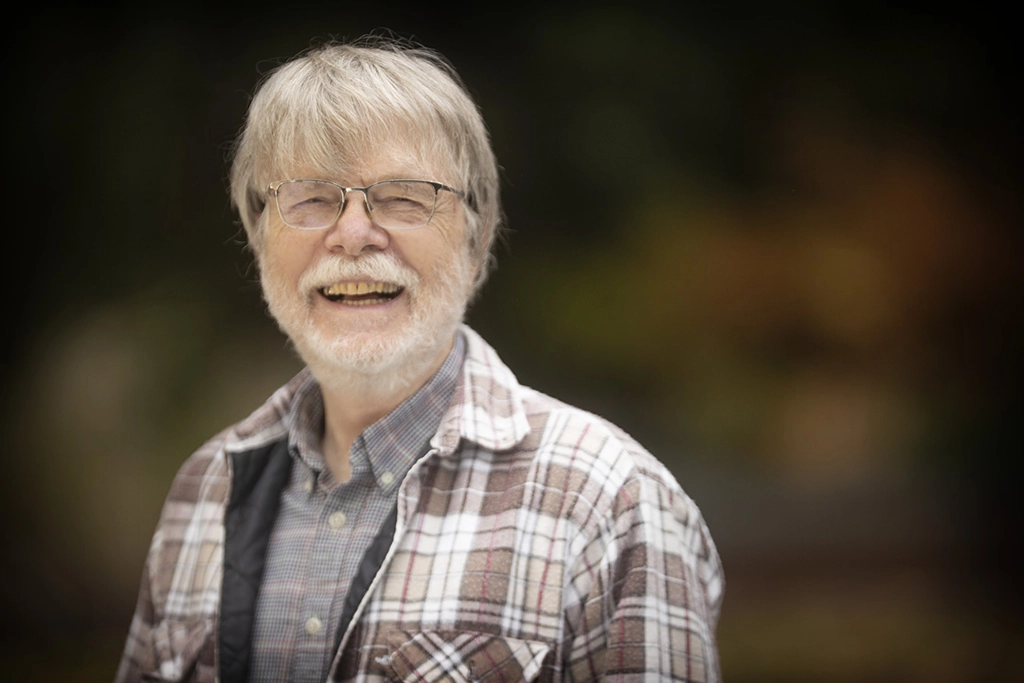
Research:
Our lab is interested in the molecular recognition events between pre- and postsynaptic cells during synaptogenesis. This recognition allows the nervous system to wire itself correctly during development. We wish to know how the presynaptic axon initially identifies the correct target cell, then how the sites of exocytosis, the active zones, of the nerve terminal become correctly aligned with the neurotransmitter receptors on the postsynaptic cell. To understand these events we must identify the proteins that mediate them, the receptors of the presynaptic plasma membrane and their postsynaptic ligands. At the neuromuscular synapse a synaptic isoform of laminin is present in the synaptic cleft secreted by the muscle cell. Laminin is a large trimeric protein of 700-900 kD containing alpha, beta , and gamma chains. It is known that mice which lack the laminin beta 2 chain have few active zones and the synaptic vesicles are not clustered at the presynaptic membrane. What presynaptic receptor mediates this effect? We have found that the laminin beta 2 chain binds the alpha subunit of the presynaptic voltage-gated calcium channel (VGCC). This is the same channel that opens in response to membrane depolarization allowing Ca+2 to enter the nerve terminal and trigger neurotransmitter release. Blocking the interaction between the beta 2 chain and VGCC during the first week of postnatal development causes the active zones to disassemble. Why is this interaction critical to active zone assembly? We hypothesize that the binding of laminin to the VGCC in the presynaptic membrane prevents the channel from being endocytosed and recycled, so it can be used as an anchor for building the active zone. In support this idea, we find that the VGGC which is bound to laminin is also complexed with the cytosolic active zone protein piccolo. We are in the process of testing our anchorage hypothesis of active zone formation.
*i Jeffrey Bryan Carroll | The Carroll lab conducts translational experiments in mouse and cellular models of neurodegenerative diseases, particularly Huntington’s Disease, with a goal of hastening treatments for these currently incurable disorders.

Research:
We are interested in understanding the mechanisms underlying rare neurodegenerative diseases, and trying to hasten the development of treatments. For many years our primary focus has been on Huntington’s Disease, a genetic neurodegenerative disorder with no disease-modifying treatments available to the more than 30,000 HD patients in the US. We work with genetically modified mouse models of HD, and cells drive from them, to try and better understand the pathogenic mechanisms that drive the dysfunction and early death of specific cells within the brains of HD patients. We have a particularly long-standing interest in the use of a therapeutic modality known as “antisense oligonucleotides”, or ASOs, which can reduce the levels of mutant genes, such as the one that unambiguously causes HD. More recently, the lab has expanded our interest into other rare neurodegenerative diseases, particularly nano-rare diseases that impact very small numbers of patients around the world, such as dentatorubral-pallidoluysian atrophy
Charles Chavkin | Using mouse generic and optical stimulation of CNS pathways, we study how stress exposure affects depression, drug addiction risk, and cognition by affecting neural circuits and molecular signaling.
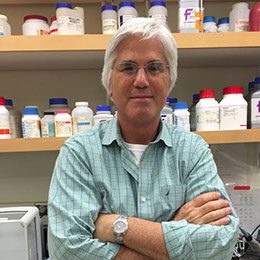
Research:
We are interested in the molecular basis of drug addiction. Drugs including heroin, cannabinoids, cocaine, and others produce specific pharmacological effects that ultimately change the functioning of neurons, reorganize plastic neural circuits, and change motivated behavior. In this lab, we take an integrative, neurobiological approach to define these changes at the molecular, cellular, anatomical, and behavioral levels. Studies at the molecular level define the structural properties of the receptors and ion channels that mediate the initial actions of opiates and cannabinoids. We are interested in learning how signaling events initiated by receptor activation are regulated, and how receptors, channels, and accessory proteins assemble to form functional macromolecular complexes. At the cellular level, we study how sustained exposure to opiates produces desensitization and how phosphorylation, down regulation, and synaptic plasticity (LTP and LTD) mechanisms contributes to drug tolerance. At the anatomical level, we study the distribution of the key proteins within the brain that are important for opiate action and how that distribution helps define the neuronal systems responsible for drug effects. Understanding how that distribution changes following repeated drug exposure helps define the changes underlying drug addiction. Based on these cellular and molecular insights, we generate mice having targeted changes in gene expression of key proteins in specific brain regions, then study the behavioral responses of the animals to opiates and cocaine. The ultimate goal of these studies is to gain a better understanding of the molecular basis of drug addiction, a malleable form of motivated behavior.
Tim Cherry | Epigenomics and Genetic Variation in CNS Development, Function, and Disease.

Research:
How does genetic variation within and across species influence the development, function, and diseases of the CNS? Our lab uses cutting edge, high-throughput molecular techniques to identify, characterize, and model the influence of genetic variation on the developing retina and brain. Our current focus is to understand how genetic variation in the non-coding regulatory regions of the genome contributes to developmental and degenerative forms of blindness as well as disorders of brain development including hydrocephalus and ventriculomegaly. In the process, we also seek to uncover the fundamental gene regulatory programs required for normal retina and brain development. Our model systems include patient-iPSC-derived organoids and genetically engineered mice. Our approaches include multiomic, single-cell-sequencing techniques (scRNA-Seq, scATAC-Seq, CUT&RUN), super-resolution imaging, genome sequencing, CRISPR-based genome editing, and machine learning. Our ultimate goal is to identify functional genetic variants that contribute to CNS disease, understand why they are disruptive, and develop approaches to treat and prevent hydrocephalus and visual disorders.
Eric Chudler | Cortical and basal ganglia mechanisms of nociception and pain, the neuroactive properties of medicinal plants and herbs, and translating basic neuroscientific research into language and activities for the general public.

Research:
We are applying the new technologies we developed for understanding the synaptic function and the makeup of synaptic vesicles. For example, we developed a single-molecule method for counting the number of protein molecules present within a cellular structure (e.g. signaling complex) or sub-cellular organelle (e/g/ synaptic vesicles). The method uses single-molecule intensity distribution as a calibration to deconvolve the number of protein molecules present and preserves the key advantage of single-molecule measurements by offering information on both the average value and the variation in the average number. Because most fluorescence images of cells are punctate in which the fluorescent molecules are spatially clustered, this method offers important quantitative information on the biological system being imaged.
John Clark | Characterizing the functional mechanism for the protective actions of the stress protein, human alphaB crystallin, a lens protein that is upregulated in aging diseases and protects against protein unfolding/misfolding and aggregation in Alzheimer’s, Huntington’s, Parkinson’s disease and cataracts.

Professor
Department of Biological Structure ✉
Preferred Pronouns:
Neuroscience Focus Areas:
Behavioral Neuroscience, Brain-Computer Interfaces
Research:
Protein-protein interactions are the biophysical basis for cellular transparency, the fundamental characteristic of lens fiber cells. With aging and post-translational modification, abnormal protein-protein interactions result in aggregation and loss of lens cell transparency. The aggregation process in the aging lens resembles amyloid formation in the aging brain. The accessibility of the lens in the living animal provides a unique opportunity to study interactions between proteins in vivo which result in protein aggregation or amyloid formation. Like the brain, the early development of the lens begins in the cranial ectoderm of the trilaminar embryo. Lens formation is initiated when surface cells elongate in response to the optic vesicle, an outgrowth from the forebrain. From the very earliest stages of cell differentiation, common transcription factors, cell adhesion molecules, channel proteins, cytoskeletal elements, and regulatory molecules contribute to the development of the lens, major sensory organs, and ganglia connected to the brain. Similar to the brain, the lens contains amyloid precursor protein (APP), amyloid beta (Abeta), tau, beta-secretase, presenilin, and alpha-synuclein which are associated with neurodegeneration. The alpha crystallins are stress proteins, concentrated in the lens to provide protection against partial unfolding mechanisms that can result in protein aggregation. This laboratory utilizes the recombinant expression of proteins, site-directed mutagenesis, and transgenic animals in the investigation of the molecular and cellular basis for lens cell transparency in normal aging and in association with neurodegenerative diseases including Alzheimer’s, Parkinson’s, and Huntington’s diseases. Quantitative techniques of protein biochemistry, molecular biology, LASER light scattering spectroscopy, and light and electron microscopy are used to characterize the protective mechanisms against protein unfolding/misfolding and aggregation during molecular aging in the lens or brain. Novel technology and instrumentation are being developed by students who worked in this laboratory, nearly all of whom are co-inventors on patents.
Gabriel Cler | Neural bases of developmental speech and language disorders.

Research:
Producing and perceiving spoken language is a uniquely human behavior that requires precise integration and careful timing of neural activity orchestrated across large portions of the brain. In some people with communication differences, development goes awry in specific and interesting ways that may tell us about atypical and typical neural processes. Two common neurodevelopmental communication disorders are developmental language disorder (DLD; also called specific language impairment) and developmental stuttering, affecting 7% and 5% of children respectively. In our lab, we study the neural bases of these disorders with a specific focus on motor differences and the basal ganglia. We use neuroimaging, electromyography, and acoustics to analyze motor learning, motor variability, and neural differences in these populations. Our long-term goal in understanding the neural underpinnings of these behavioral differences is to help improve clinical care and quality of life for affected individuals.
Forrest Collman | Circuit and cell-type mechanisms of computation using large scale connectomics data.

Research:
The firing patterns of neurons arise from the integration of inputs from thousands of synaptic partners arranged in highly structured patterns in the nervous system. Advances in large scale imaging and computational analysis are now producing increasingly detailed and complete maps of this circuitry using electron microscopy. Our group at the Allen Institute both produces this data, analyzes it, and helps make it accessible and available to the broader neuroscience community. Furthermore, because many of our datasets also include large scale in vivo optical recordings from these same neurons we are analyzing the relationships between the connectivity of these circuits and the diverse response properties of individual neurons. Our current analysis efforts focus on providing insights into the cell type specific patterns of connectivity in mouse visual cortex, where we hope to reveal insights into the functional role of the diverse set of cell-types. To do this we develop analytical and computational techniques to identify cell types, measuring the ultrastructural properties of these connections, and characterize the dominant patterns and motifs in the microcircuitry of the brain.
A significant portion of our work is devoted to developing and maintaining the computational infrastructure that lets diverse groups of biologists access and analyze a variety of questions about the basic structure and connectivity of the brain. Although connectivity of individual neurons is a significant focus, there are also a host of other biological questions these data can address, including the properties of non-neuronal cells and how they physically interact with other cells, the diversity and organization of subcellular organelles within cells and how that varies across cell types, and the detailed structure of neuro-vascular coupling. This infrastructure now supports datasets in both mouse and fly, and a growing ecosystem of user facing tools.
David G. Cook | Molecular mechanisms of neurodegenerative disorders.

Research:
The Cook laboratory has two interrelated research programs.
-
- Mild traumatic brain injury (mTBI): Rapidly accumulating evidence indicates that repetitive exposure to the shock waves generated by high explosives initiate injury processes that cumulatively increase risk for neurodegenerative disorders similar to Alzheimer’s disease (AD), Parkinson’s disease (PD), and chronic traumatic encephalopathy (CTE). Our goal is to better understand the mechanisms of blast-induced brain injury by using a translationally relevant in vivo model systems approach to discover the mechanisms of repetitive mTBI. This work is closely integrated with ongoing clinical studies in individuals with blast-related mTBI. By this means we are working to integrate findings in model systems and humans using multi-modal neuroimaging, neuropathology, behavioral analyses, and molecular biology.
-
- Alzheimer’s disease: AD is one of the most common disorders of aging and is a disease for which there are very few therapeutic options – and those treatments currently available are of limited efficacy. The search for improved treatment options depends on attaining a better understanding of the mechanisms underlying AD pathogenesis. In this regard the Cook laboratory is focused on exploring the role astrocytes play in AD. Astrocytes are an abundant cell type in the brain that play critical roles in protecting neurons from injury, regulating cell-to-cell communication, and an array of key metabolic functions. In spite of their importance, their role in AD pathogenesis is not well understood. In recent years the Cook laboratory has uncovered new evidence of astrocyte dysfunction in AD centered on the failing ability of astrocytes to remove glutamate from the brain. The goal of this work is to understand how inefficient glutamate clearance occurs in AD so that we can devise new strategies to treat or prevent cognitive decline in AD.
Dennis Dacey | Structure and function of the primate retina.

Research:
Our long-term research goal is to characterize the functional organization of the macaque retina as a model for understanding the early stages of human visual processing. We have developed an in vitro retina preparation that offers a unique opportunity to explore retinal cell physiology and morphology using intracellular injection and recording techniques. We are currently investigating the retinal circuitry that underlies the wavelength encoding properties of retinal ganglion cells. Since the macaque monkey possesses a trichromatic color vision that is virtually identical to that of humans it provides an excellent experimental model for understanding the processing of color-related signals in the human retina. Opportunities for pre- and postdoctoral fellows include training in the fundamentals of color science, visual physiology and biophysics, synaptic pharmacology, and human and non-human primate retinal anatomy.
*i Valerie Daggett | Molecular modeling of proteins implicated in disease. Design and testing of diagnostic and therapeutic agents for neurodegenerative diseases.

Research:
There are now over 40 human diseases related to the misfolding and aggregation of specific proteins, for example Alzheimer’s disease, Parkinson’s disease and Huntington’s disease. Each protein is related to one or more unique diseases, but the protein aggregates seem to share a common structure: insoluble fibrils with ?-sheets running parallel to the axis (amyloid). Recent advances, however, indicate that the toxic species are soluble oligomers, not the fibrils. Detailed mechanisms of misfolding and structures of toxic aggregates are yet unknown and difficult to discern through experimental methods. So, we use realistic computer simulation methods to characterize the unfolding/misfolding of these proteins. We have found some common features to the intermediate species proposed to correspond to the toxic species. We are actively using the computer-derived structural information to design and experimentally test potential diagnostic and therapeutic agents. We have some very promising designs that target and preferentially bind to the toxic oligomers of transthyretin (system amyloid), Abeta (Alzheimer’s Disease) and amylin (type 2 diabetes). In addition, these same compounds inhibit amyloidosis. We are also testing the ability of these compounds to prevent transmission of transmissible spongiform encephalopathies by binding to the infectious form of the prion protein.
*Martin Darvas | Structure and function of the primate retina Investigation of aging process, neurodegeneration, cognitive decline, and apathy with a specific focus on Alzheimer’s disease.
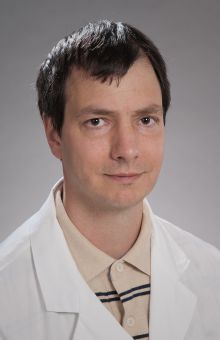
Research:
The research goal of my laboratory is to understand structural and molecular bases of cognitive impairment that occurs with age and neurodegenerative diseases like Alzheimer’s disease (AD). To achieve that goal my lab primarily focuses on the investigation of the infectious-disease (HSV1) etiology of AD and on the contribution of aging-related factors to AD. My secondary goal is to develop quantitative and precision molecular neuropathology methods to improve understanding of pathologic changes in clinical and experimental samples, and in samples from aging companion dogs. My laboratory uses mouse models of aging, neurodegeneration, and HSV1 infection together with in vivo monitoring of behaviors that correspond to cognitive and apathy/anxiety related deficits that occur in aging and AD. We use both mutant strains and viral vectors to model AD neuropathologic change in mice. We complement our experimental in vivo approaches with neuropathologic and transcriptomic post-mortem analyses. Recently, we have established assay conditions to measure AD biomarkers in brain, cerebrospinal fluid and plasma of companion dogs. And we have also started to investigate non-cognitive changes that occur in aging and AD. I have an established (NIH funded) research program to study Alzheimer’s disease and aging, including a pharmacological intervention study in aging mice.
*Marie Y. Davis | The goal of my research is to understand mechanisms causing neurodegeneration in human movement disorders.

Research:
The goal of my research is to understand mechanisms causing neurodegeneration in human movement disorders. As a physician scientist with clinical expertise in genetic movement disorders, my work has been focused on understanding how mutations in the gene glucosidase, beta acid 1 (GBA) increase the risk of developing Parkinson’s disease (PD). Recently my work and others discovered that PD patients with GBA mutations also have accelerated progression of cognitive and motor decline. I developed a Drosophila model of GBA deficiency manifesting neurodegeneration, motor and cognitive dysfunction, and accelerated protein aggregation to investigate how GBA influences PD pathogenesis. This fruit fly model has provided valuable insight into a novel mechanism for GBA in regulating extracellular vesicles mediating propagation of pathogenic protein aggregates from cell to cell. I have also developed a human neuronal cell culture model derived from induced pluripotent stem cells (iPSCs) from a PD patient carrying a GBA null mutation to further model and investigate the role of GBA in propagating protein aggregates between cells. I hypothesize that the mechanism underlying propagation of protein aggregates from cell to cell controls the rate of disease progression and understanding this mechanism could reveal novel therapeutic targets to slow or halt disease progression. My lab is currently investigating alterations in lipid metabolism and endocytic trafficking due to GBA deficiency that may lead to faster disease progression. I am also starting to investigate a possible neuroprotective role for GBA in glial cell types such as astrocytes. The use of these models, each having their own unique strengths and advantages, will allow me to comprehensively examine how GBA influences and accelerates disease progression, with the goal of identifying new therapeutic strategies to slow or halt disease progression in PD and other aggregate-prone neurodegenerative conditions.
Horacio de la Iglesia | C-M, Syst
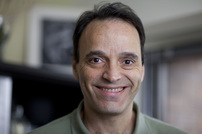
Research:
Our laboratory is interested in understanding how neural systems encode time and generate rhythmic physiological and behavioral outputs to adapt to the temporal structure of the environment. We use a comparative approach that capitalizes on animal models that range from the laboratory mouse to humans.
Nikolai C. H. Dembrow | C-M, Comp, Motor, Cog, M-E-S, Sens & Per
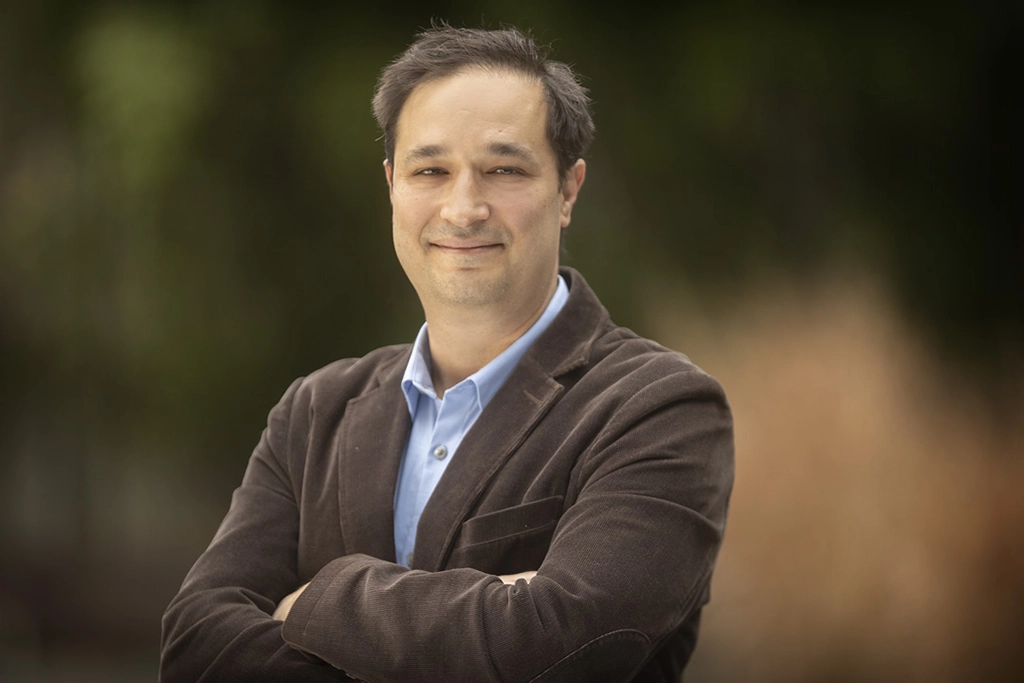
Research:
Neuromodulation and Dendritic Integration in the Neocortex
How do individual neurons contribute to functional (and sometimes tragically dysfunctional) behavior in animals? Since the days of Ramon y Cajal, the remarkable morphology of neurons’ dendrites has inspired neuroscientists to wonder how these elaborate structures contribute to an individual neuron’s function. For the pyramidal neurons within the neocortex, dendritic (tree-like) structures extend throughout the cortical column, integrating thousands of synaptic inputs from other neurons. Since the advent of patch clamp physiology and calcium imaging in the last century, we now appreciate that the complement of ion channels in the soma, dendrite and axons critically shape how a neuron responds to barrages of synaptic activity. Furthermore, it is well demonstrated that these intrinsic properties are malleable: neuromodulation by serotonin, dopamine, acetylcholine, noradrenaline and even neuropeptides can alter the intrinsic properties of these cells. Many of the drugs used for treatment of mental health disorders, epilepsy, and neurodegeneration alter neurons’ intrinsic properties as well.
Intriguingly, a great deal of evidence points to the fact that neocortex is not comprised of a single pyramidal neuron type with universal properties. Rather, pyramidal neurons can be divided into distinct “types” that are physiologically, transcriptomically and morphologically different. Several emerging lines of evidence suggest that human brain disorders may have cell type-specific etiologies, wherein different classes of neurons make distinct contributions to the pathophysiology of the disease. Using state-of-the-art patch clamping techniques in combination with 2-photon calcium imaging and synaptic activation we explore how different types of cells (both within and across neocortical areas) integrate inputs and how integration is altered by neuromodulation. Our work lays the foundation to better understand how neuron types contribute to epilepsy, neurodegenerative and affective disorders, and may provide a path to cell-type specific genetic and pharmacological treatment approaches to these conditions.
Ajay Dhaka | Biology of somatosensation via molecular, cellular, developmental and behavioral investigation.

Associate Professor
Department of Biological Structure ✉
Preferred Pronouns: He/Him/His
Neuroscience Focus Areas:
Behavioral Neuroscience, Cell and Molecular Neuroscience, Developmental Neuroscience, Disorders of the Nervous System, Neural Circuits, Neurotransmitters, Modulators, Transporters and Receptors, Sensory Systems
Research:
Our perception of the external world comes from our senses. The sense of touch or somatic sensation consists of the perception of multiple discrete stimuli including temperature, pain, proprioception and discriminative touch. Specialized neurons within the dorsal root ganglia (DRG) and trigeminal ganglia (TG) sense these diverse stimuli via nerve endings that project to the skin, muscles and the organs of the body, and this information is then transmitted to the brain via the spinal cord. Electrophysiological characterization has shown that these neurons receive and relay information from these diverse stimuli at least in part through subclasses of DRG neurons that convey different perceptual modalities. Only in the last decade have the genes involved in the direct gating of sensory modalities begun to be identified. Many of these genes belong to the Transient Receptor Potential (TRP) family of non-selective cation channels, including TRPV1 and TRPA1, detectors of noxious stimuli and TRPM8, a sensor of cool temperature.
While there have been recent advancements, very little is known about how somatosensory neurons become specialized during development and how their neuronal circuitry facilitates their ability to transmit specific environmental cues in the adult. We are interested in understanding the mechanism by which sensory information is coded by the peripheral nervous system, and how specific subclass specificity and neuronal circuit assembly occurs during development. In addition, we are working to identify novel sensory receptors for modalities such as mechanosensation, temperature and nociception. Discovering how the simple circuits of the peripheral nervous system assemble and code information output will not only help us understand how we perceive the world around us but may also provide valuable insight into how these processes occur in the more complex circuits of the brain.
*i Laura Driscoll | How do we utilize previously acquired knowledge to guide behavior in novel environments?
Research:
My recent work on multitasking artificial recurrent neural networks (RNNs) has unveiled potential neural substrates for modular computation, termed dynamical motifs, shedding light on flexible computation mechanisms. Building on my prior experience in studying neural population dynamics during associative learning and artificial systems, I aim to investigate the development and maintenance of dynamical motifs throughout learning and consolidation. By bridging experimental and computational approaches, including collaborations with neuroscience labs and human psychophysics experiments, I will develop a conceptual framework for flexible cognition. This work will inform the brain-computer interface research community and contribute to understand learning and memory through the lens of computation through dynamical systems.
Adrienne Fairhall | Comp

Research:
The Fairhall lab uses mathematical and statistical methods to study the relationship between neuronal circuitry and functional algorithms of computation. Through collaborations with experimental labs we develop analysis and modeling to understand how: single neurons transform their inputs; what rules govern adaptation in different sensory modalities; how the properties of single neurons contribute to their role in network dynamics; how algorithms of learning, memory and motor control are instantiated in the dynamics of neural circuits in birdsong, invertebrate models and primates.
Angela Fang | Dis, M-E-S, Cog

Assistant Professor
Department of Psychology ✉
Preferred Pronouns: She/Her/Hers
Neurobiological correlates of maladaptive social cognition in anxiety and obsessive-compulsive related disorders to inform personalized treatment prediction; role of oxytocin in the pathophysiology of these disorders.
Research:
Social cognition is a broad umbrella term encompassing myriad facets of processing social and emotional information, including emotion recognition, attention to social cues, interpretations of social situations, mentalizing (perspective taking), and prospection. Understanding the neurobiological mechanisms underlying the perception, interpretation, and memory of social information may pave the way toward more precise models of psychological illness, illness classification, and targeted intervention. I have been interested in maladaptive aspects of social cognition in two pathologies characterized by pervasive patterns of social avoidance: social anxiety disorder and body dysmorphic disorder. These processes may be mediated by changes within the default mode network and the oxytocin system, either independently or jointly. In the Center of Neuroscience, Neuroendocrinology, and Clinical Translation (CoNNeCTLab), we employ brain connectivity techniques (e.g., resting state functional connectivity MRI), in combination with traditional experimental paradigms across clinical psychological science, social/cognitive psychology, and neuroscience to investigate the following key questions: (1) What are the neurobiological contributions to maladaptive social information processing in disorders characterized by severe social avoidance? (2) What is the predictive utility of these neurobiological mechanisms in revealing one’s expected course of illness or treatment response? (3) Can these neurobiological mechanisms be manipulated through targeted neuromodulation strategies (e.g., intranasal oxytocin)?
*i Susan Ferguson | Syst, M-E-S

Associate Professor
Department of Psychiatry & Behavioral Sciences ✉
Preferred Pronouns: She/Her/Hers
Using novel viral vector methods to unravel the role of portico-basal ganglia circuitry in the development of behaviors that contribute to drug addition, as well as in the processes that regulate decision-making, motivation and impulsivity.
Research:
The overall goal of my research program is to use a multi-level approach, combining molecular biology, anatomy, genetics and behavioral neuroscience, to understand the role of cortico-basal ganglia circuitry in the development of behaviors that are associated with drug reward and addiction, as well as in the processes that underlie decision-making, motivation and impulsivity. To accomplish these goals, my laboratory employs a novel chemical-genetic approach that uses viral vectors to express artificial, engineered G-protein coupled receptors (known as DREADD receptors) in discrete neuronal cell populations in rodents. Activation of DREADD receptors by the otherwise inert synthetic ligand clozapine-N-oxide will lead to transient alterations in neuronal activity (either increasing or decreasing cell function depending on which G-protein coupled DREADD receptor is expressed) of the targeted cell populations. This neuronal modulation can be paired with specific phases of the behaviors that we study, including psychostimulant-induced behavioral sensitization, drug self-administration and operant learning tasks, in order to parse out the neural circuitry that contributes to behaviors associated with addiction and other neuropsychiatric disorders.
Ione Fine | Effects of long-term visual deprivation, perceptual learning and plasticity, psychophysics, fMRI and computational vision.
Research:
Over the last few years my laboratory has been focusing on the effects of long term visual deprivation on human visual processing. Long term visual deprivation results in deficits in high level visual processing (such as face and object recognition) that cannot be explained by low level amblyopic deficits, and suggest that the role of visual experience differs widely across different types of processing. As well as characterizing the behavioral effects of deprivation, we have been examining the neural effects, using functional magnetic resonance imaging.
Jennifer Forsyth | Dis
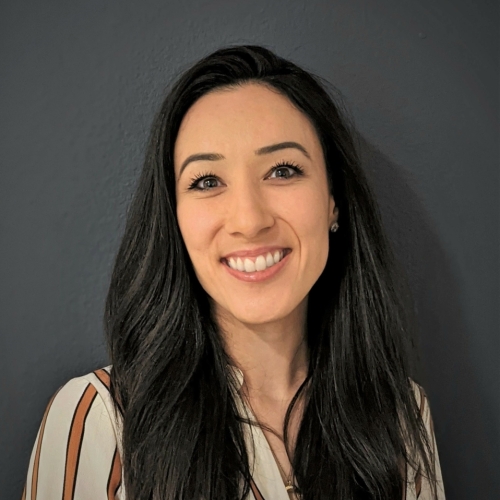
Assistant Professor
Department of Psychology ✉
Preferred Pronouns: She/Her/hers
Genetic, neurobiological, and environmental mechanisms underlying schizophrenia and related neurodevelopment disorders.
Research:
I am interested in understanding the pathways from genes to neural- and systems-level dysfunction in psychotic disorders such as schizophrenia, including understanding how variability in genetic factors may affect brain development and contribute to variability in clinical presentation among patients. I am also interested in understanding how genetic and environmental factors shape broader psychiatric and related phenotypes, including understanding how specific genetic variants, such as known, pathogenic copy number variants, contribute to risk for multiple psychiatric disorders. To pursue these questions, my research incorporates genetic, behavioral, and neuroimaging (i.e., MRI and EEG) methods.
*i Jose M. Garcia | Neuroendocrinologic aspects of traumatic brain injury and on hormonal pathways in wasting conditions.

Research:
My current research focuses on the role of ghrelin, androgens and other anabolic pathways in different wasting conditions including aging and cachexia. My basic lab is focused on understanding molecular pathways involved in the development of muscle wasting, fat atrophy and anorexia in these settings, and in the development of novel targets for these conditions. My group is also involved in several human trials in patients with cancer anorexia and cachexia aiming at characterizing the pathways involved and identifying the mechanisms of action of different potential therapies. I am also interested in neuroendocrine abnormalities in traumatic brain injury (TBI) and have a clinical research program focused on this problem.
*Yijie Geng | Dis, M-E- S

Research:
Sociality is an integral part of animal behavior, and its deficits are closely associated with mental illnesses in humans. We use the zebrafish as our primary model to probe the neural and molecular basis of sociality in vertebrate animals. These findings then guide us to study how deficits in social behavior contribute to mental illnesses such as autism spectrum disorder. Compared to rodent models, the zebrafish model is easily amendable to chemical and genetic perturbations, develops a robust and complex social behavior early in life, and can be subjected to high-throughput behavioral analyses. The small size of its brain also enables convenient whole brain functional imaging and circuit analyses. Taking advantage of these unique benefits of the zebrafish model, the Geng lab’s work mainly focuses on the following research areas: 1) method development. We specialize in high-throughput behavioral assays based on computer vision, as well as high-resolution behavioral analyses using deep learning. We actively develop new methods to investigate unique aspects of zebrafish behavior. 2) discovering novel molecular determinants of social behavior. Zebrafish is an excellent model for high-throughput chemical and CRISPR screens, second to none compared to other vertebrate model organisms. A long-standing interest of the Geng lab is to use our unique high-throughput behavioral screening platforms to systematically discover molecular pathways responsible for regulating the development of vertebrate social behavior. 3) mapping out the social brain. Emerging evidence suggest that behaviors are controlled by coordinated activities across the brain. We are developing a digital brain atlas for juvenile stage zebrafish to enable whole brain functional imaging in search of brain-wide social circuits. 4) translational discoveries. We model mental illnesses in zebrafish and rely on high-throughput screening to discover behavioral modulatory chemicals with translational potential.
*Anna K. Gillespie | Syst, Dis, Cog

Research:
The goal of the Gillespie Lab is to understand how the neural mechanisms underlying memory processes degrade over the course of healthy aging and in the context of neurodegenerative disease. We leverage the tuning of some hippocampal neurons to spatial location in order to study two forms of mental simulation – theta sequences and hippocampal replay – which are thought to be critically involved in encoding ongoing experience and storing it as memory. We are working to develop novel interventional tools to prevent or reduce age-related detrimental changes in neural activity and preserve cognitive ability. The lab uses in vivo electrophysiology to record from hundreds of neurons from rats as they learn and perform complex memorydependent tasks. We engineer real-time neurofeedback approaches to manipulate neural activity and use advanced analytical techniques and computational models to relate neuronal activity to memory-guided behavior.
David Gire | How neural circuits process natural spatiotemporal olfactory sensory cues to guide flexible, ethnologically relevant behaviors.

Research:
Our brains utilize noisy, fluctuating sensory signals from the surrounding environment to guide valuable behaviors such as finding food or avoiding danger. Precise coding of relevant information in spatial and temporal patterns of neural activity is a key element of this function, with efficient coding adapted to both the statistical structure of sensory input as well as the changing behavioral demands of a given situation. This coding is achieved through complex circuits of synaptic interactions between populations of neurons and occurs as an animal explores and actively samples its environment. A mechanistic understanding of neural coding during active sensing and behavior is an important step towards the development of targeted therapeutics for psychiatric and neurodegenerative disorders. We seek to define the neural circuit operations that support complex and flexible behavioral responses to natural sensory stimuli. We connect neural activity to behavior by employing a variety of techniques including electrophysiology, neural imaging, optogenetics, and automated behavioral analysis.
*Sam A. Golden | Dis, Sys, M-E-S, Cog

Research:
Focuses on cellular, circuit, and whole brain mechanisms underlying social motivation, with an emphasis on appetitive aggression and its interaction with neuropsychiatric disorders such as addiction and depression.
Matt Golub | Machine learning for systems neuroscience and neuroengineering; computation through neural population dynamics; brain-computer interfaces.

Research:
Our group develops computational approaches for understanding single-trial neural population activity. We are interested in how neural populations collectively compute and communicate within the brain, and how these neural mechanisms support our abilities to generate movements, make decisions, and learn from experience. Our contributions leverage and advance machine learning techniques, including deep learning, dynamical systems, and probabilistic latent variable models.
Sharona Gordon | Ion channel biophysics & trafficking and regulation of neuronal plasticity in sensory transduction.

Research:
Molecular basis of sensory transduction.
We are interested in the mechanisms by which sensory signals are converted into messages than can be understood by the brain. Very different types of sensory stimuli–the packet of energy contained within a photon, the chemicals that make up odors, and changes in temperature, for example–must all be converted into an electrical signal that can be carried along neurons to be processed by the brain. Not surprisingly, the link between signal transduction cascades and the requisite changes in membrane potential is mediated by members of a related family of ion channel proteins. Our lab seeks to understand how signal transduction cascades provide the energy that controls this family of ion channels.
Ion channels are enzymes that permit the flow of charged ions from one side of a cell membrane to another. Through sophisticated, low-noise recording procedures we can measure the flow of current through an individual ion channel molecule in real time. By altering the environmental conditions on a selected side of the membrane, we can mimic the sensory stimuli that normally activate these enzymes and measure the effects of different conditions on their behavior. We are particularly interested in the molecular mechanisms by which an ion channel can integrate disparate sensory signals, such as heat, acidity, and noxious chemicals. Using a combination of molecular biology, biochemistry, and electrophysiology we aim to understand the structural basis for the function of these channels and how they integrate into the sensory transduction systems in various cell types.
Thomas Grabowski | Functional magnetic resonance imaging studies of the neural systems basis of language and cognition in health and disease.

Professor
Department of Radiology ✉
Preferred Pronouns: He/Him/His
Neuroscience Focus Areas:
Behavioral Neuroscience, Disorders of the Nervous System, Neural Circuits, Computational Neuroscience
Research:
My laboratory use functional MRI and other MRI-based approaches to investigate the cortical neural systems basis of cognition. The focus of the work is on the neural systems basis of language and semantic processes. The core approach is functional magnetic resonance imaging, and the human subject groups under study are patients with stroke,epilepsy, degenerative dementia, and typically aging persons. The fundamental goals are 1) to advance understanding of cortical systemsphysiology and pathophysiology at the systems level; 2) to advance the technology of cortical systems imaging., i.e. MRI-based approaches that characterize and track the component nodes/fields, connectivity, dynamics, and representational structure of neural systems that support adaptive function; and 3) to foster application of these approaches to clinical medicine. In this wider context, the paradigm of lexical-semantic retrieval and the left temporal lobe is useful for elucidating the operation of association cortex, and for driving the development of measures and vocabulary to characterize the structural integrity, functional stability and flexibility, and alteration in the information content of cortical systems.
Benjamin Grannan | Human electrophysiology research studying the neural mechanisms underlying language and learning behavior.

Assistant Professor
Department of Neurological Surgery ✉
Preferred Pronouns: He/Him/His
Neuroscience Focus Areas:
Computational neuroscience, Neural circuits, Behavioral neuroscience
Research:
Humans have the remarkable ability to rapidly construct complex representations from auditorily or visually processed language. Humans can also infer the meaning of novel words after only one or two exposures to a word. Such inference is achieved by leveraging lexical and semantic knowledge along with the syntactical features within sentence context. Context-dependent prediction to achieve rapid word learning has been shown to be a life-long behavior, present in both adolescents and adults. This behavior is often referred to as “one-shot learning” in the fields of psycholinguistics, neurobiology, and artificial intelligence. My lab effort is focused on studying rapid learning in the context of language using intracranial single unit and local field potential recordings in humans undergoing clinical recordings for epilepsy mapping. We aim to characterize the neural dynamic between mesial temporal structures and the frontotemporal neocortical areas of the “expanded language network”, which are collectively hypothesized to support context-based language prediction and learning.
*Brock Grill | Proteomic and genetic interrogation of neuronal signaling.

Research:
Dr. Brock Grill’s overarching interest is understanding how signaling influences development and function of the nervous system. His team’s major research directions include: 1) Using in vivo proteomics to decipher how ubiquitin ligase activity and intracellular signaling hubs affect axon termination, synapse maintenance and neuron function. 2) Using engineered forward genetic approaches to interrogate how u-opioid receptor sensitivity and tolerance are regulated.
Ultimately, Dr. Grill’s lab aims to identify new molecular targets for treating neurodevelopmental disorders, neurodegenerative disease, and opioid addiction/withdrawal.
Juliane Gust | The Gust lab studies how cancer treatment and inflammation affect the developing brain.

Research:
The Gust lab studies how the developing brain is affected by systemic inflammation, specifically in cancer immunotherapy. We focus on cellular interactions at the neurovascular unit, relying heavily on imaging tools such as in vivo two-photon brain imaging. This work is highly interdisciplinary, at the intersection of neurobiology, immunology, and oncology, with a common focus on structure and cell-cell interaction in the 3D environment. Dr. Gust is also an active clinical-translational researcher in cancer immunotherapy.
*i Jeffrey Herron | Developing new research tools and systems to explore the applications of bi-directional neural interfaces to enable or improve the treatment of neurological diseases, disorders, and injuries.

Research:
I am a research-focused faculty member of the University of Washington’s Department of Neurological Surgery, where I seek to leverage my technical experience in human-use medical device research to aid in protocol creation and lead in the technical execution of new protocols to expand the capabilities of the neuromodulation field. My research focus is in developing new research tools and systems to explore the applications of bi-directional neural interfaces to enable or improve the treatment of neurological diseases, disorders, and injuries. Specifically, I specialize in translating new concepts and technologies into preliminary human feasibility studies through the application of technical systems integration engineering, experience working with the regulatory bodies responsible for gaining IRB and IDE approval, and an understanding of the medical design controls processes required to create human-use systems.
*Mitra Heshmati | Syst, M-E-S,

Research:
Our goal is to develop a comprehensive cell-type and circuit-specific understanding of anesthesia-induced brain plasticity to better inform translational approaches to expediting emergence from general anesthesia and mitigating postanesthetic agitation and delirium. We apply preclinical models of social stress to investigating agitation and delirium across the lifespan. We currently use brain clearing and whole brain imaging with light sheet microscopy, an approach that enables the single cell-resolution snapshot of activity in circuits across the whole rodent brain, to investigate anesthesia state transitions. We then take advantage of genetically targeted biosensor imaging to interrogate the population activity of neurons within identified anesthesia-activated circuits during arousal. Using knockdown and overexpression of specific genes of interest within specified neural circuits, we examine the effects of targeted synaptic alterations on neural circuit activity and behavior.
Christoph Hofstetter | Development of novel diagnostics and treatments for spinal cord injury in animal models and human clinical trials.

Research:
Traumatic spinal cord injury (tSCI) has devastating effects on numerous physiological functions and severely impacts the quality of life. Our lab conducts translational research in various animal tSCI models and conducts clinical trials at Harborview Medical Center. For acute tSCI, we are developing novel quantitative biomarkers for prognosis and treatment guidance. We have developed novel ultrafast, contrast-enhanced ultrasound that allows for unprecedented assessment of the hemodynamic changes in the spinal cord after injury. Early results suggest that this novel biomarker is responsive to both injury severity and neuroprotective treatment effects. Our laboratory is also investigating surgical and pharmacological neuroprotective approaches to mitigate secondary damage following acute tSCI. For chronic tSCI, we deliver electrical stimulation to the spinal cord to promote neural plasticity and facilitate recovery. In an animal model, we are developing stimulation protocols to reduce spasticity and improve control of voluntary movements. In addition, we are participating in a clinical trial to determine the effectiveness of transcutaneous electrical stimulation on motor control.
*i Greg Horwitz | Syst, Sens & Per
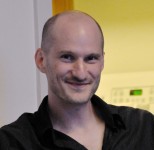
Research:
Vision is the result of computations occurring in the eye and brain. We seek to understand what these computations are and how they are implemented by neurons. Color vision is a particularly attractive platform for this endeavor. The front end of color processing in the visual system is understood in fine detail, as exemplified by the excellent color rendering on modern video displays. On the other hand, how color signals are processed in the cerebral cortex is still remarkably murky. This is the frontier we are pushing. Our primary experimental techniques are electrophysiological (single neuron recording and electrical microstimulation), psychophysical (measurement of detection thresholds), and computational (modeling/analysis of spike-triggered stimulus distributions). We are also exploring genetic techniques to manipulate the electrical activity of subsets of neurons in the visual system.
Sandra Juul | Developing neuroprotective strategies for infants at high risk for neurodevelopment impairment using in vivo and in vitro models of preterm and term brain injury.

Research:
The goal of the Neonatal Neuroscience laboratory is to identify new therapeutic approaches to neonatal brain injury, determine whether they are safe and effective, and bring these new treatments from the laboratory to the bedside. For example, using a variety of approaches and several animal models ranging from rodents to ferrets to nonhuman primates, we have worked to optimize Epo treatment in the developing brain at risk for injury. This work includes studies of pharmacokinetics, drug dosing, and duration of therapy as well as identifying mechanisms of Epo neuroprotection and possible synergistic treatments. This work has culminated in two multicenter clinical trials: A multicenter randomized controlled trial to determine whether Epo is a safe and effective neuroprotectant for extremely preterm infants. The Preterm Epo Neuroprotection (PENUT) trial is funded by NINDS, and enrolled 940 babies born between 24-0/7 and 26-6/7 weeks of gestation with 2-year follow up; Dr. Juul is also multi-PI with Dr. Yvonne Wu (UCSF) on the High-Dose Erythropoietin for Asphyxia and Encephalopathy (HEAL) Trial, a randomized controlled trial of Epo neuroprotection for 500 term infants with hypoxic-ischemic encephalopathy (HIE). This multicenter trial will determine whether Epo in addition to therapeutic cooling will improve the outcome for infants with HIE. Current laboratory work led by Dr Thomas Wood is focused on Azithromycin neuroprotection in a ferret model of preterm encephalopathy. Additional studies done in collaboration with Dr. Elizabeth Nance are focused on determining regions of brain injury following hypoxia ischemia, and testing potential additive or synergistic neuroprotectants to optimize outcomes.
Brian Kalmbach | Neurophysiology of primate neocortical cell types. Ion channels, neuromodulators and related genes.

Affiliate Assistant Professor
Department of Physiology & Biophysics ✉
Preferred Pronouns: He/Him/His
Neuroscience Focus Areas:
Excitable Membranes and Synaptic Transmission, Disorders of the Nervous System, Neurotransmitters, Modulators, Transporters and Receptors
Research:
The human brain displays an astounding diversity of neuronal cell types. The central goal of my research is to understand how different human cell types contribute to nervous system function/dysfunction. We combine physiological, anatomical and molecular profiling approaches to address how the subcellular distribution of ion channels and their modulation contributes to cell-type specific differences in neuronal function. To achieve these goals my colleagues and I collaborate with local neurosurgeons to obtain human brain tissue from patients undergoing surgical resection for the treatment of tumors or epilepsy. This permits the rare and exciting opportunity to study the properties of living human neurons.
Franck Kalume | Investigations of mechanisms and treatments of genetic epilepsies in animal models.

Research:
Research in the Kalume lab is focused on understanding the pathophysiological basis of genetic epilepsies and their co-morbid conditions. The goal is to pave the way for the discovery of future therapeutic approaches for these disorders. The lab current research projects are centered on studies of the cellular and molecular mechanisms underlying sudden unexpected death in Leigh syndrome (LS), a debilitating neurodegenerative disorder. LS is strongly associated with loss-of-function mutations in NDUFS4, the gene that encodes a subunit of the protein complex I in the mitochondrial electron transport chain. The Kalume lab uses innovative approaches that combine behavioral assays, patch-clamp electrophysiology, electroencephalography, electrocardiography, plethysmography, immunohistochemistry, and mouse genetic techniques to identify changes in neuronal and network excitability that causes epilepsy and associated conditions in LS. Other work consists of studies of (1) mechanisms of epilepsy in PIK3CA-related to disorders of brain malformations and (2) the impact of non-pharmacological manipulations of sleep and circadian rhythm on seizures and SUDEP in Dravet syndrome.
C. Dirk Keene | Study human brain structure and function to understand the neuropathological underpinnings of human brain aging injury, neurodegeneration, and cancer.

Research:
My overriding goal is to contribute knowledge and resources to understand normal human brain structure and function, brain aging, neurodegenerative disease, neurooncology, and neurotrauma research that lead to mechanistic discoveries and effective preventive and therapeutic strategies. I hope to accomplish this goal through neuropathological research and innovation, collaborative science, and education. As Leader of the UW BioRepository and Integrated Neuropathology (BRaIN) Laboratory, I supervise a team whose primary goal is to respectfully and expeditiously perform brain autopsies in a manner that preserves tissues for diverse research applications under best practices conditions and protocols while providing accurate and timely neuropathologic diagnoses according to the latest guidelines. A principal goal for these efforts is to foster sensible sharing of these data and tissue resources with researchers to propel scientific discovery and best honor the generosity of the donor, his or her loved ones and caregivers, and their clinical research teams and studies. The primary goals for my research lab are to develop, deploy, and promote technologies that accentuate the scientific utility of archived and prospectively acquired human brain tissue, to utilize discoveries derived from these critical resources to develop and test hypotheses in experimental systems, and to apply this knowledge to develop therapeutic strategies.
Jeansok Kim | Neurocognitive effects of stress, basic mechanisms of fear.

Research:
My laboratory utilizes multi-level analyses toward understanding (i) the effects of stress on the brain and behavior, and (ii) the neuronal mechanisms underlying basic associative learning in the mammalian brain. These investigations consist of employing lesion, pharmacological, and in vitro and in vivo neurophysiological techniques.
Natalia Kleinhans | Multimodal imaging and neuropsychological assessment of neuropsychiatric disorders.

Research:
Dr. Kleinhans uses functional and structural connectivity methodologies including functional magnetic resonance imaging (fMRI), magnetic resonance spectroscopy (MRS), and diffusion tensor imaging (DTI), to study neurodevelopmental disorders, the impact of prenatal cannabis use on brain development, and mild traumatic brain injury. Her work focuses on identifying brain-behavioral correlates of emotion, reward processing, cue-reactivity, and executive functioning.
Andrew Ko | My research focuses on human electrophysiological and imaging correlates of behavior, disease, and interventions for epilepsy, movement disorders and pain.

Assistant Professor
Department of Neurological Surgery ✉
Preferred Pronouns: He/Him/His
Neuroscience Focus Areas:
Brain-Computer Interfaces, Disorders of the Nervous System, Neural Circuits
Research:
Our lab seeks to characterize electrophysiological and imaging correlates of behavior and disease in humans. Particularly, we take advantage of access to human data during interventions for epilepsy and movement disorders. We focus on electrophysiological recordings gathered during long-term monitoring for seizure localization, or during implantation of electrodes for Deep Brain Stimulation. Areas of interest include basic science research examining neural correlates of cognition and behavior, and mechanisms underlying deep brain stimulation for movement disorders; we are also focused on translational work in the development of closed-loop deep brain stimulation systems. We work closely with researchers using advanced MR imaging to examine similar patient populations, looking for imaging correlates for surgical outcomes. In short, we combine approaches from neurophysiology, radiology and engineering to approach both the description of neurobiological processes and intervene in neuropathology.
*Brian Kraemer | Molecular causes of neurodegeneration in Alzheimer’s disease, amyotrophic lateral sclerosis (ALS), and related disorders of the nervous system.

Research:
We work to understand the molecular mechanisms driving neurodegeneration in Alzheimer’s disease, amyotrophic lateral sclerosis and other aging related neurodegenerative disorders. One feature common to age dependent neurodegeneration is abnormal aggregation of specific pathological proteins. We use a variety of model systems including C. elegans, cultured human cells, mice, and human tissue to explore neuroprotective strategies targeted against protein aggregation. Our focus is on identifying genetic pathways and small molecules preventing protein aggregation and the resulting neurotoxicity.
Patricia Kuhl | Speech perception throughout the lifespan with an emphasis on early development; behavioral as well as ERP, fMRI, and MEF studies on language processing.
Research:
My work has focused on the development of speech perception in infants, and in particular on the role of experience in shaping a child’s abilities to perceive speech sounds. Currently, I am interested in examining the mapping between a child’s perception of speech sounds as measured in behavioral tasks and the neural substrates of this behavior. Additionally, there are ongoing studies using behavioral tests and EEG recordings of adults to study the cognitive organization of speech sounds.
Mehmet Kurt | Kurt lab aims to understand the mechanobiology of the brain in health and disease using advanced neuroimaging tools, machine-learning methods, and multi-scale computational models.
Research:
The brain is perhaps our most studied and least understood organ. Due to its incredible complexity, the origin and development of numerous neuropathological conditions are still far from completely elucidated, while at the same time having an enormous impact on the life quality and expectancy of the ones affected. Therefore, there is a dire need to find novel strategies for addressing the clinical and diagnostic questions that remain open. Despite clear evidence that mechanical factors play an important role in brain development, pathophysiology and disease mechanisms, current research efforts focus mainly on the biochemical or electrophysiological aspects, mostly due to the difficulty of probing the brain mechanically. Kurtlab brings forward a novel platform for investigating the mechanobiology of the brain in health and disease by leveraging advanced neuroimaging tools, machine-learning methods, and multi-scale computational models of the human brain. The overarching goal of our research program is to enable the in vivo, subject-specific investigation of brain mechanics. Our main clinical interests include traumatic brain injury (TBI), Alzheimer’s Disease, Chiari Malformation I, intracranial aneurysms, and hydrocephalus.
Adrian KC Lee | Auditory brain sciences and neuroengineering.

Research:
What’s on your mind? This is what we want to know while you are communicating and interacting with the world. We combine magneto- and electro-encephalography (M-EEG) along with magnetic resonance imaging (MRI) to map the spatio-temporal dynamics of the cortical network involved in
-
- Attention: object selection and scene analysis (e.g., listening to your friend in a crowded restaurant);
-
- Executive control: decision making and error monitoring (e.g., real-time control of a wheel-chair through a Brain-Computer Interface)
Searching for neural biomarkers We seek to discover distinct brain signatures that can be used to classify different brain states (coined as “neural biomarkers”). Our goal is to combine this neuroscience knowledge with state-of-the-art engineering approaches to design next-generation Brain-Computer-Interface devices that enable users to dynamically tune their prosthetic devices using only their minds. Imagine!
Ed Lein | Molecular, cellular and circuit organization of the developing and adult human neocortex.
Research:
My research interests center on understanding the cellular and local circuit architecture of the human neocortex, and what is unique about the human cortex that gives rise to our unique cognitive capabilities. My laboratory contributes to and builds on large-scale programs at the Allen Institute for Brain Science to systematically analyze developmental and adult transcriptomics, quantitative cellular anatomy, and physiological function. These efforts aim to create a comprehensive taxonomy of human cortical cell types and to elucidate the connectivity matrix between cell types that underlies cortical circuit function. These data provide opportunities for computational approaches to understanding global features of the transcriptional and cellular landscape of the human cortex and for comparative studies across rodents, primates, and humans. Increasingly we are focused on quantitative single-cell analysis and the causal relationship between gene expression and the anatomical and functional phenotypes of specific cell types. This work involves the development of tools and methodologies specifically tailored to study single cells and cell ensembles in human postmortem and neurosurgically-derived human cortical tissues, including the development of molecular genetic techniques for cell type- and circuit analysis. Particular interests include understanding the development and function of the local human cortical microcircuit, how distinct neuronal subtypes contribute to circuit function, and whether there are unique features of the human cortical architecture.
*Li Li | Rational neural circuit targeting to control arousal.
Research:
The ability to control arousal is essential to modern medicine, with broad applications in anesthesia, sleep medicine, and psychiatry. However, arousal control is not binary, but rather involves the complex orchestration of multiple neuromodulatory circuits. Li lab therefore aims to better understand the neurobiology of these neuromodulatory circuits across broad spatiotemporal scales, integrating findings at the molecular, synaptic, circuit, physiological, and behavioral levels. We also adapt technology to enable bidirectional modulation of arousal with increased circuit-specificity. The long-term goal is to control arousal more precisely via rational targeting of specific neural circuits.
*Nicole Liachko | Dis

Research:
The Liachko laboratory studies neurodegenerative diseases of aging with a focus on Amyotrophic Lateral Sclerosis (ALS) and Alzheimer’s disease. Our work seeks to understand the biology underlying pathological aggregating proteins associated with these diseases, particularly the proteins TDP-43 and tau. Using model systems such as C. elegans, mammalian cell culture, primary neurons, and mice, and highly disease-relevant human post-mortem tissue, we seek to understand the drivers of disease as well as downstream pathogenic processes. In the course of our studies, we employ a variety of molecular biology and genetic tools including forward and reverse genetics, transduction mediated gene expression, small molecule screening, transcriptomic and proteomic approaches, immunohistochemistry, and in vivo microscopy. Some of our current projects include characterizing cellular mechanisms driving tau and TDP-43 neurotoxicity, including kinase and phosphatase mediated post-translational modifications and determining synergism among pathological proteins. Using translational approaches, we are working to identify new therapeutic targets to intervene in these devastating conditions.




